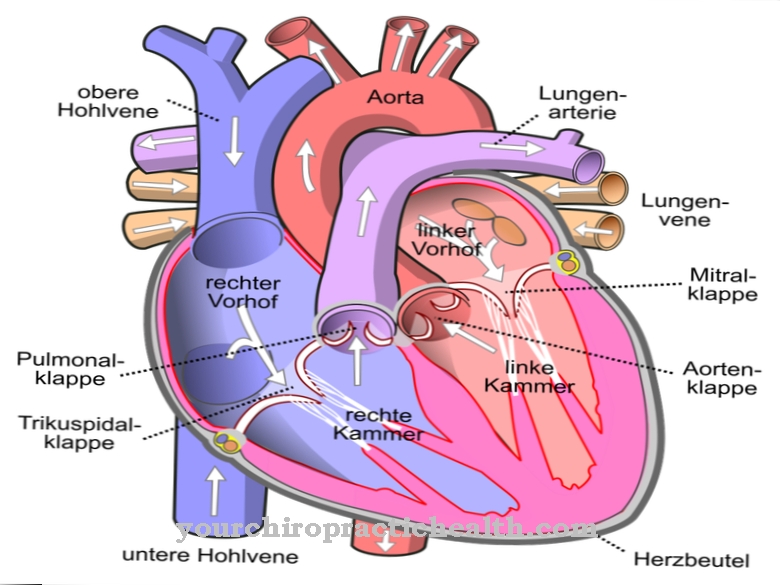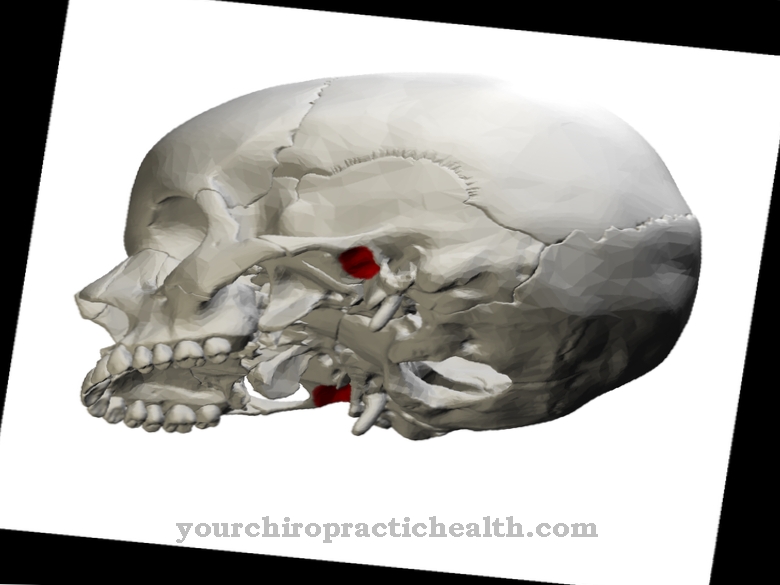The entire digestive system breaks down food into simple substances in order to extract the usable substances for the organism. It basically consists of a long tube to which various Digestive organs are bound.
What are digestive organs?
The digestive organs include the mouth, throat, tongue, esophagus, pancreas, liver, stomach, gallbladder, duodenum, small intestine and large intestine, rectum and anus.
But intestinal bacteria, enzymes and many other processes also significantly support digestion.
Anatomy & structure

The digestive system is similar in all vertebrates. The whole system extends from the mouth to the anus. Along the way, the food is broken down or converted through the addition of various enzymes.
The nutrients are extracted in the course of the process and transported into the body or the individual cells. Each digestive organ has a function that follows on from the previous one and thus all organs are dependent on one another.
A more detailed anatomy of the individual organs can be found in the respective articles.
Functions & tasks
Digestion begins with the mouth and tongue. The food is chewed in the mouth, which means it is processed into small parts that can be processed, ideally a coarse pulp. The salivary glands are also located in the mouth.
If there is now food in the mouth, saliva is produced and this is already a digestive juice. It contains the enzyme amylase, which ensures that starch in the food is broken down. The saliva also makes it easier to swallow and thus the further transport of food through the body. The food reaches the stomach through the esophagus by means of muscles that push the pulp on.
Muscles then knead the food in the stomach. The stomach lining produces stomach acid. This consists among other things of hydrochloric acid and pepsin, which can break down proteins. At the end of the stomach there is a kind of sphincter muscle that only opens when the food is ready for further processing.
The food now travels from the stomach to the small intestine. This still differs between duodenum and ileum. The duodenum produces more digestive enzymes and the ileum then absorbs the dissolved nutrients. The mucous membrane of the small intestine is equipped with so-called villi, which gives the small intestine a huge surface area and thus ensures a much better absorption process for nutrients. Here they go directly into the blood and lymphatic system.
The duodenum is connected to the pancreas, which adds digestive juices to the pulp. These juices are alkaline and thus counteract gastric acid. In addition, important hormones such as insulin and glucagon are produced here, which are responsible for controlling the blood sugar level.
The liver and gall bladder send digestive enzymes that can break down fats, especially when needed. The fluid is stored in the gallbladder and released into the small intestine when necessary.
From the small intestine, the digested food reaches the large intestine. Above all, a lot of water is withdrawn from the unusable food residues here. The last part of the large intestine is known as the rectum and ends with the anus, a sphincter muscle from which the no longer usable food remains are excreted from the body.
Illnesses, ailments & disorders
There are many ailments that can arise in connection with the digestive system. Starting with bad or falling teeth, deficits can arise in the optimal digestion.
Often there is also inflammation of the esophagus, which can cause pain, especially when eating. The stomach is more often burdened by gastric mucosal inflammation, which, even if left untreated, can lead to problems with food utilization. Intestinal problems are often caused by foreign pathogens or drugs that cause a different reaction in the digestive system. In particular, diarrhea or constipation can occur. Even the gut end system can be affected by disease. These are, for example, hemorrhoids, which suggest a weak conjunctiva and make elimination more difficult. Particularly severe cases must be treated surgically.
Malignant diseases in each individual digestive organ can also occur less frequently. Since you usually do not notice this through pain - at least not early - preventive care is necessary. Chronic diseases, such as the autoimmune disease Crohn's disease, which gradually scarred the intestine, represent a major restriction in digestion.
You can find your medication here
➔ Medication for diarrhea













.jpg)

.jpg)
.jpg)











.jpg)